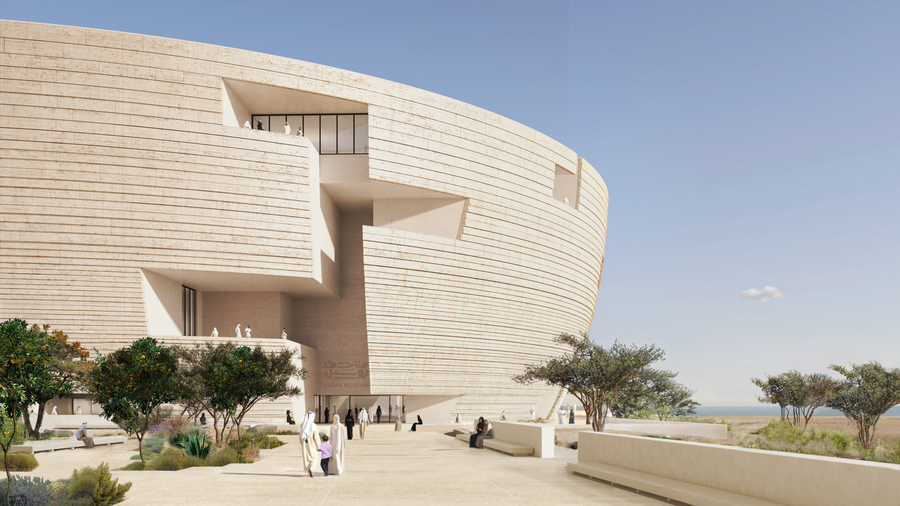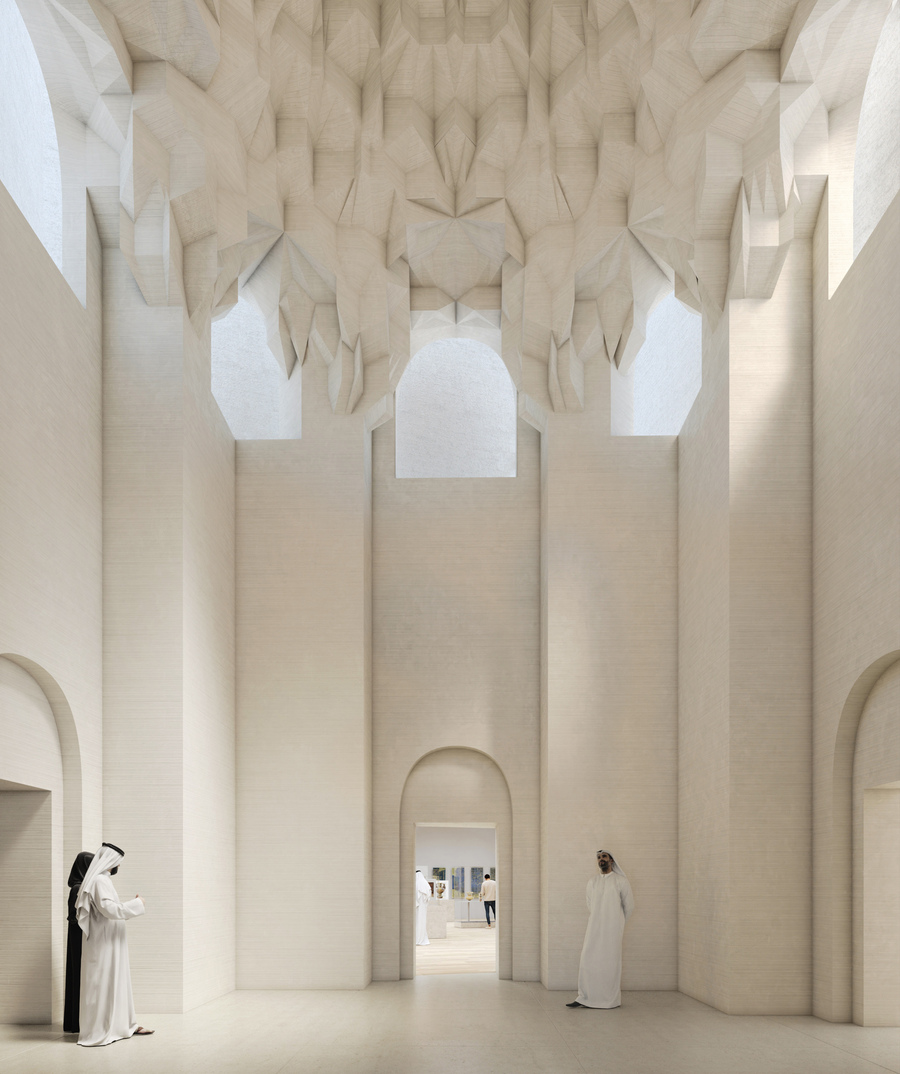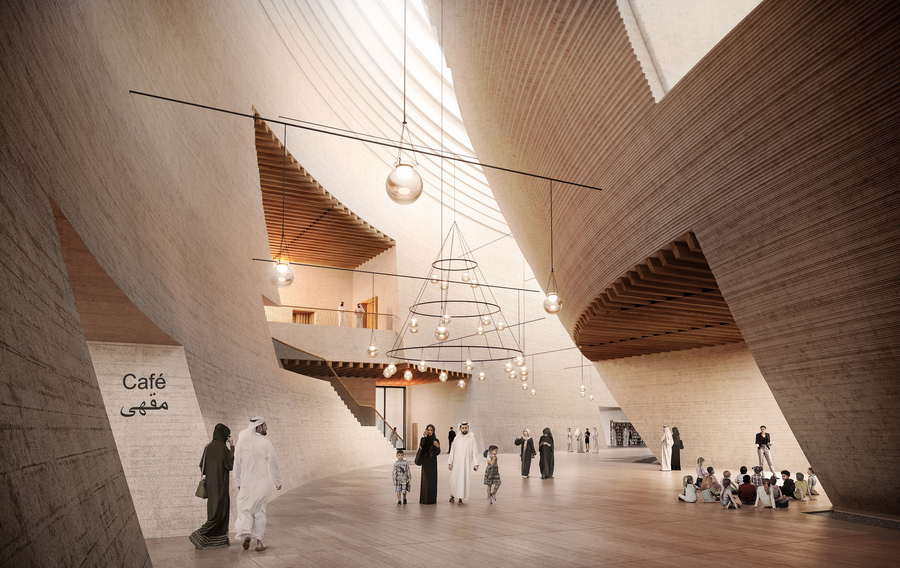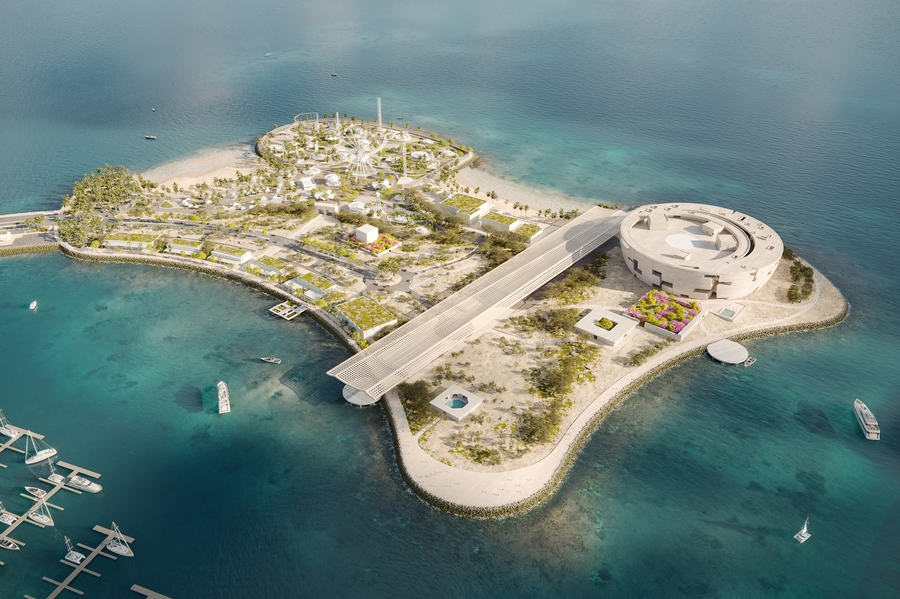
Swiss architect Herzog & de Meuron has revealed its plans for Qatar’s Lusail Museum, a five-storey, 30m-tall structure with 11,000 sq m of floor space that will hold the world’s largest collection of “Orientalist” paintings.
The project will be sited on the southern tip of Al Maha Island in Lusail City, north of Doha. According to Herzog & de Meuron, it will be a “vertically layered bazaar or a city contained within a single building”.

The layout takes the form of three spheres that intersect to create two distinct parts resembling a full and a crescent moon.
An internal crescent-shaped street will be naturally lit from above and connect the museum to a central lobby, complete with wood-panelled library, auditorium, shop, café and metallic prayer space.

The galleries offer flexible exhibition space, with the top floor containing four abstract replicas of historical buildings: the Aljafaria dome in Spain, the Ablution fountain in the courtyard of Ibn Tulun Mosque in Cairo, the dome of the Jameh Mosque in Iran and the bedroom pavilion in the Topkapi Palace in Istanbul.
The museum will also house 19th-century paintings, photographs, film, fashion and decorative arts.

Jacques Herzog, Herzog & de Meuron’s co-founder, said: “Nothing is given forever. There are areas like these coasts that are more ephemeral, more transformable, something between water and land. Al Maha Island is man-made – a work of land art, actually.
“In the same way, we wanted the Lusail Museum to be a piece of earth, as if growing out of Al Maha Island. Not just a building, but a world in and of itself, almost like a planet.”
Construction on the Lusail Museum began last year.
Further reading:










